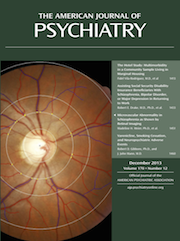Response to Vicario
To the Editor: We did not review the disgust literature in our article because we chose a “pure” sweet taste with positive valence. But it is certainly reasonable to raise the question of whether disgust plays a role in aberrant eating behavior. We are aware of only one imaging study that has addressed this issue. Relative to comparison subjects, Cowdrey et al. (1) observed that individuals recovered from anorexia nervosa showed increased neural response to a pleasant chocolate taste in the ventral striatum but increased neural response to an aversive strawberry taste in the insula and putamen. Because the study design may have evoked an anticipatory component (2, 3), it is problematic to directly compare it to our present study. However, it does raise the possibility of some difference in insula response to pleasure and aversive stimuli in anorexia nervosa. It would be worthwhile to design studies that seek to disentangle pleasure and disgust. In summary, Dr. Vicario is correct in suggesting insula involvement in processing disgust response to gustatory stimuli, and the hypothesis of “altered disgust sensitivity” related to insula processing should be further explored.
1 : Increased neural processing of rewarding and aversive food stimuli in recovered anorexia nervosa. Biol Psychiatry 2011; 70:736–743Crossref, Medline, Google Scholar
2 : Does a shared neurobiology for foods and drugs of abuse contribute to extremes of food ingestion in anorexia and bulimia nervosa? Biol Psychiatry 2013; 73:836–842Crossref, Medline, Google Scholar
3 : Increased anterior insula activation during anticipation of food images in women recovered from anorexia nervosa. Psychiatry Res Neuroimaging (Epub ahead of print, Aug 28, 2013)Google Scholar



